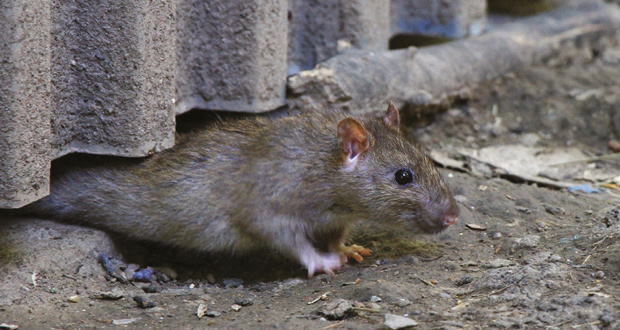 Winter is the season with the highest number of rodent infestations. John Stewart, Technical Training Manager at Pelsis Group offers advice on ways to maintain pest control in commercial, industrial and residential properties
Winter is the season with the highest number of rodent infestations. John Stewart, Technical Training Manager at Pelsis Group offers advice on ways to maintain pest control in commercial, industrial and residential properties
inter is a challenging time for rodents. During the colder months they’ll tend to search for warmer, drier conditions and alternative food sources, which drives them indoors and therefore closer to humans. Alongside this, because rodents tend to feed at night, the shorter days can mean they are looking for food at earlier times, increasing the chance of human encounters.
For FMs this means an increased risk of occupants spotting infestations. It also opens enhanced health and safety risks and potential regulatory action by environmental health officers if the sites involve food preparation and handling.
As with many areas impacting facilities managers, proactivity is essential, which requires adopting an integrated rodent management strategy which comprises four key principles: exclusion, destruction, restriction and monitoring.
RODENT-PROOFING SANITATION AND WASTE MANAGEMENT PLANS
To help exclude and restrict rodents it is important to target their winter food and bedding sources, which means stepping up your sanitation plans. As even minimal food sources can be problematic for hungry rodents, it is advisible to set in place a “clean-as-you-go” policy to quickly tackle spillages and debris. Complementing this is the need to undertake more rigorous cleaning inspections across areas most likely to encourage infestations.
For example, if a facility stores bulk food goods on racking systems, special attention needs to be paid to the bases which can accumulate debris and attract rodents. Another key attractor for rodents is waste paper and plastic. If large volumes are left unmanaged, packaging material can provide the perfect nesting area so it’s important to ensure a regular inspection of compression box balers and storage trailers.
As part of these enhanced sanitation measures, FMs also need to look at how they are handling and inspecting external waste bins and compactors. These should be located away from main buildings on concrete pads with central drains and located near to hoses for daily cleaning.
Because bins are a key risk area for rodent feeding, be on the lookout for the signs of an infestation such as gnaw marks, droppings or burrows and report it immediately. When inspecting bins, it is important to see if the lids are tight fitting and the drainage bungs are checked as these are a common entry point for rodents.
To mitigate the rodent risks with sanitation sites, invest in durable, rust-proof material such as plastic or stainless steel.
OPTIMISING BUILDING FABRICATION AUDITS
Building audits are integral to winter preparation plans and when facilities managers undertake them, it is important to include rodent exclusion and restriction tactics. Proactive repairs should be done in the autumn, as where draughts can enter, so can rodents.
Similarly, checking the seals on doors and windows and minimising the time they remain open will help prevent opportunistic rodents from entering. Installing flyscreens doors can also prevent rodent entry while allowing for sufficient ventilation.
It’s important to ensure drains are adequately cleared to prevent pooling, as well as adapted with specially designed non-return valves to stop pests from entering.
Alongside looking at fixtures and fittings, facilities managers need to check for redundant and unused machinery. Not only is it a source of clutter, but it also offers rodents an ideal harbourage point.
To help with building audits and pest management, the use of increasingly sophisticated, and accessible, thermal imaging cameras is recommended. These allow easy identification of rodent harbourage without the need to remove fixtures and fittings.
EMBRACING SMART MONITORING
Monitoring is an essential step in integrated rodent management through regular trap inspections and surveying areas at risk of infestation. However, given the enhanced winter risks, ensuring an effective monitoring regime can be challenging.
This is where adopting digital monitoring solutions, which are an evolving frontier enabling smarter pest management, is an increasingly meaningful step.
Rodent traps with digital systems in place empower a more proactive approach to management strategies, overcoming their nocturnal, cryptic nature which makes physical monitoring a challenge.
They provide real-time alerts with motion detection and trap activity to centralised monitoring points such as a smartphone, tablet or laptop, allowing users to quickly and easily pinpoint activity allowing for a more timely, tailored response.
By having 24/7 monitoring with digital solutions and their ‘always on’ capability throughout the winter months and beyond, facilities can move beyond a reactive footing to help identify issues before they become challenges.
Targeting the areas which offer rodents food and shelter during the colder months and embracing the latest pest control measures helps avoid breaching health and hygiene regulations and ensures a cleaner, more appealing environment.





